Perrier’s Baobab Tree
- October 12, 2023
- 0 comment
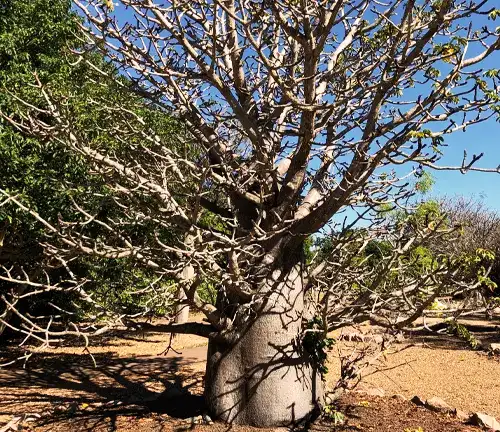
Perrier’s Baobab (Adansonia perrieri) stands as an emblematic arboreal presence on the island of Madagascar, a testament to the extraordinary biodiversity found within this unique ecosystem. Belonging to the Malvaceae family, this baobab species is renowned for its distinctive appearance, characterized by a stout trunk and an unmistakable bottle-shaped silhouette, earning it the colloquial moniker of the “upside-down tree.” The robust trunk of Perrier’s Baobab serves a dual purpose—it not only provides structural support but also functions as a reservoir for water storage, a crucial adaptation for survival in the often arid environments of Madagascar.
Named in honor of the French botanist Joseph Marie Henry Alfred Perrier de la Bâthie, this species has been subject to extensive botanical study owing to its ecological significance. Beyond its role as a botanical curiosity, Perrier’s Baobab plays a vital role in local ecosystems, offering sustenance for a variety of wildlife and contributing to the overall landscape dynamics. Culturally, the tree holds importance as indigenous communities traditionally use its bark and fruits for various purposes. However, Perrier’s Baobab, like many other species, faces threats from habitat loss and the impacts of climate change. Conservation efforts are underway to safeguard this iconic tree and preserve its unique ecological contributions, ensuring that it continues to thrive and stand as a symbol of Madagascar’s natural heritage.
| Characteristics | Description |
| Scientific name | Adansonia perrieri |
| Common name | Perrier’s baobab tree, baobab of the South |
| Plant type | Deciduous tree |
| Hardiness zones | 10-12 |
| Mature height | 15-25 meters (49-82 feet) |
| Mature spread | 10-20 meters (33-66 feet) |
| Growth rate | Slow |
| Sunlight requirements | Full sun |
| Soil type | Well-drained, sandy soil |
| Water requirements | Drought-tolerant, but benefits from regular watering during the growing season |
A Brief History
Perrier’s Baobab Tree (Adansonia perrieri) is a living testament to the rich history and biodiversity of Madagascar. Named in honor of the French botanist Joseph Marie Henry Alfred Perrier de la Bâthie, this iconic species has intrigued scientists and nature enthusiasts alike. Its presence in Madagascar reflects the intricate relationship between the island’s flora, fauna, and the people who have interacted with it for generations.
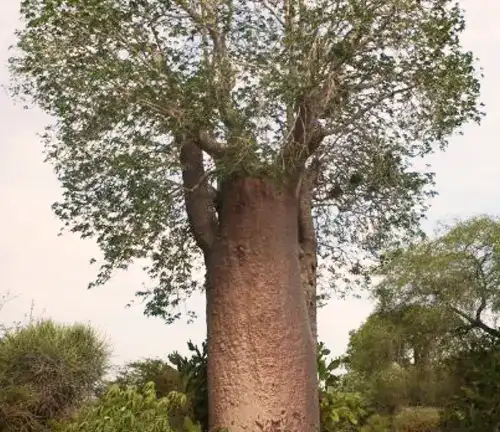
Color/Appearance
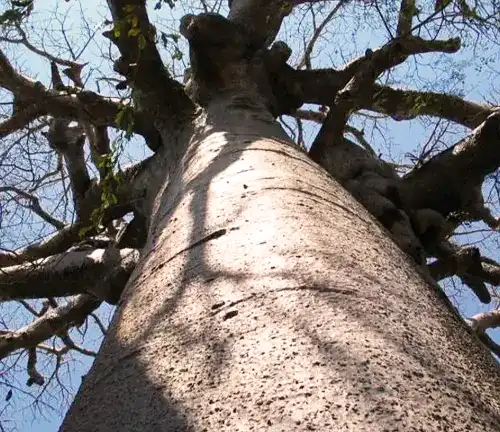
The Perrier’s Baobab is a visual marvel, with its stout trunk and distinctive bottle-shaped form. The bark ranges from a smooth gray to a weathered brown, adding to its unique aesthetic. Its branches, resembling inverted roots, give the tree its colloquial name, the “upside-down tree.” Against the backdrop of Madagascar’s diverse landscapes, this baobab stands as a striking symbol of nature’s artistic expression.
Unique Features
Beyond its unusual appearance, Perrier’s Baobab boasts unique features that contribute to its ecological prominence. The tree’s trunk, specialized for water storage, allows it to thrive in arid environments, showcasing nature’s adaptive brilliance. The bottle-shaped silhouette and the intricate patterns on its bark further add to its distinctiveness, making it a focal point in Madagascar’s botanical tapestry.
Ecological Importance
Perrier’s Baobab plays a pivotal role in the intricate web of Madagascar’s ecosystems. Its branches provide shelter and sustenance for a variety of wildlife, contributing to the island’s biodiversity. The tree’s resilience in challenging environments makes it a key player in the preservation of Madagascar’s unique natural balance.
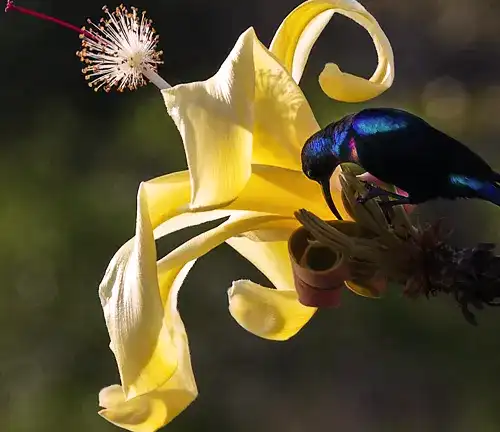
Adaptation and Resilience
The adaptation of Perrier’s Baobab is a testament to nature’s ingenuity. The tree’s ability to store water in its trunk allows it to withstand harsh conditions, showcasing a remarkable resilience that enables it to endure and thrive in the face of environmental challenges.
Cultivation and Care

Cultivating Perrier’s Baobab requires a nuanced understanding of its unique needs. While it can adapt to various soil types, providing well-draining soil and ample sunlight is crucial. Careful attention to water requirements, especially during the early stages of growth, is essential for ensuring the health and vitality of these magnificent trees.
Wood Products and Applications
The wood of Perrier’s Baobab, while not as extensively used as some other species, has unique properties. Its fibrous nature makes it suitable for certain traditional applications, and its bark has been historically utilized for crafting. However, sustainable harvesting practices are crucial to ensure the longevity of this species.


Other Uses
Beyond wood products, Perrier’s Baobab finds a place in the cultural practices of indigenous communities. The bark and fruits of the tree have been utilized for various purposes, ranging from medicinal applications to traditional ceremonies, showcasing the multi-faceted role this species plays in the lives of the Malagasy people.
Threats and Conservation
Despite its resilience, Perrier’s Baobab faces threats from habitat loss and the impacts of climate change. Conservation efforts are underway to safeguard these iconic trees, emphasizing the need for sustainable land management practices and the preservation of the ecosystems that support their existence.
Benefits
The benefits of preserving Perrier’s Baobab extend beyond its aesthetic and cultural value. The tree’s role in supporting biodiversity, contributing to ecological balance, and potentially offering sustainable resources underscores its significance in the broader context of conservation and sustainable development.
Conclusion
Perrier’s Baobab, with its captivating appearance and ecological significance, stands as a living testament to the delicate dance between nature and humanity. As we appreciate the uniqueness of this species, it becomes imperative to recognize our role in ensuring its continued existence. Conservation, sustainable practices, and a deep respect for the interconnectedness of all life are essential for preserving not just the Perrier’s Baobab but the rich tapestry of life that defines Madagascar.
Frequently Asked Questions (FAQs)
- Why is Perrier’s Baobab called the “upside-down tree”?
Perrier’s Baobab earned its nickname due to its distinctive appearance. Its branches, resembling gnarled roots, extend upwards into the sky, creating an illusion of an inverted tree. - What makes Perrier’s Baobab uniquely adapted to arid environments?
Perrier’s Baobab’s trunk is adapted for water storage, allowing it to thrive in arid conditions. This adaptation enables the tree to survive and even flourish in regions with limited water resources. - Are there any traditional uses of Perrier’s Baobab beyond its bark and fruits?
Yes, in addition to the traditional uses of its bark and fruits, indigenous communities have historically used the tree’s leaves for medicinal purposes and its wood for crafting tools and utensils. - What wildlife species depend on Perrier’s Baobab for shelter and food?
Perrier’s Baobab provides essential habitat and sustenance for a range of wildlife, including various bird species, bats, and insects. The tree’s unique structure makes it a key feature in the landscape for these creatures. - What conservation efforts are in place to protect Perrier’s Baobab?
Conservation initiatives for Perrier’s Baobab include habitat preservation, reforestation projects, and sustainable land management practices. These efforts aim to safeguard the species from threats like habitat loss and climate change and ensure its long-term survival.



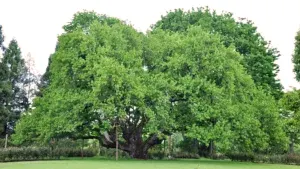
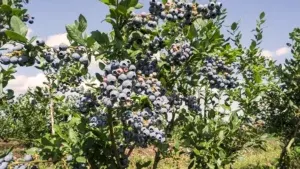



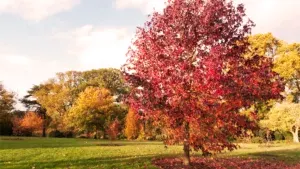



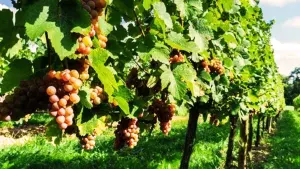

Leave your comment